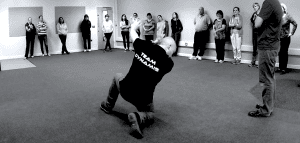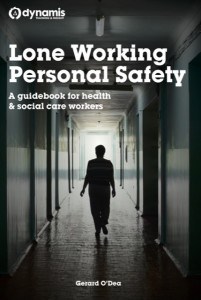Stimulus and Response: Instinctive Movement
Stimulus-Response (S-R) Compatibility is a scientific finding defined as the ‘naturalness of the connection between the stimulus and the associated response’. It refers to how the Reaction Time for skill performance is faster the more compatible the Stimulus-Response pairs.
For example, the S-R Compatibility for turning a car steering wheel to the left in response to an upcoming left turn stimulus is very close. This is not the case for a person placed for the first time in a sailing boat who is asked to turn the boat to the left – they generally will have a short “incompatibility delay” while they work out that the tiller needs to be moved to the right in order to turn the boat to the left.
A highly practiced performer can overcome many things, including the disadvantage of multiple S-R choices and low S-R Compatibility. For example the skilled sailboat racer almost instantly moves the tiller to the left as soon as it is obvious he needs to turn the boat to the right.
Research has shown that both the amount of practice and the nature of practice can effect Choice Reaction Time. With extreme amounts of practice, high-level performers can produce reactions that approach automatic processing; not only are these reactions very fast, but they are slowed down little, if at all, as the number of S-R choices increases.
That’s the good news: S-R Non -Compatibility can be overtrained and therefore compensated for. HOWEVER, as we see in our operational training environments, we often have very limited time with our staff and breakaway/restraint learners! Just this week our trainers were given two-and-a-half hours with a group to bring them to competence! Many of the agencies and trusts we work with want their staff to achieve competence within 2 to 3-hours training time!
So how do we fix this issue of Stimulus-Response Compatibility, Reaction Time and the attainment of competent performance of Breakaway or Self-Defence Skills?
Natural Defensive Gestures and Compatibility
Consider how a person naturally responds to a sudden stimulus, such as a splash of water aimed at their face….. Now, consider (if you have experience of it) how some Breakaway and Self-Defence training attempts to teach how a staff member “should” block a punch. Often the “natural” response to the stimulus is seen as somehow less-optimal than a neater, more technically alluring or complex movement, however what the sport-science is telling us is that if the defensive “blocking move” does not closely match the naturally-connected response, then the Reaction Time will be longer.
Needless to say, in the case of a punch to the face, a longer Reaction Time carries serious risk. What then is the most naturally-associated response to a punch in the face?
Cell Press, in an article in 2004 noted new research which was being published on the machinery of that automatic, natural defensive response called the startle reflex;
“…a critically important protective mechanism by which animals and humans instantly protect themselves against threats ranging from an attacking predator to an incoming golf ball.”
For some years, a scientist called Graziano has been studying in a number of experiments how certain movements, consistent with defending the head or body from impending threats are automatically evoked. These defensive movements include:
“a squint and facial grimace that was more pronounced on the side of the sensory receptive field, a turning of the head away from the side of the sensory receptive field, a rapid movement of the hand to an upper lateral location as if blocking an object in the sensory receptive field, and a turning outward of the palm”.
He went on to note that “ These movements had a machine-like repeatability over hundreds of trials” suggesting that they are highly reliable and do not atrophy over time. He also asked whether there might be a stored set of postures in the brain which controls limb-movements to evoke these inherited defensive gestures .
Pahlavian, researching similar fear effects and publishing his findings in 2000, found similarly:
“…stimuli such as pain or fear automatically elicit patterns of terminal motor states corresponding to fight or flight, initiating processes of preparation of spatially oriented movements which are automatic”
Critically, these movements are extremely fast:
For a protective movement in which the hand moved to an upper lateral position and turned outward as if to block an impending threat to the head, the velocity was remarkably fast, appropriate for a defensive gesture (230 cm/s at peak speed…) [from Graziano]
So, it would seem, that incorporating natural defensive gestures into our Breakaway and Self-Defence training programmes (and knowing how to do so effectively and methodically) may indeed be a way to overcome some of the issues with improving Technique Recall, Performance Effectiveness and reducing Choice Reaction Time.
Our Self-Protection Trainer certification course incorporates much of this theory and provides examples of how to incorporate good practice into training design.
———————————————-

Gerard O’Dea is a conflict management, personal safety and physical interventions training consultant. He is the training director for Dynamis, a specialist in personal safety and violence reduction initiatives and the European Adviser for ‘Verbal Defense and Influence’, a global programme which addresses the spectrum of human conflict. www.dynamis.training
Gerard’s book on Lone Worker Personal Safety is available on Amazon Kindle and Paperback.



